-
Search in Illinois, Indiana for missing canister holding radioactive materials
Teams from the Illinois Emergency Management Agency (IEMA) are continuing their search in Illinois and neighboring Indiana for a missing steel canister containing radioactive material. The locked steel canister was last believed to be in a custom oil well logging truck. The nuclear material was used by an Illinois company specializing in surveying oil wells.
-
-
Residents of a St. Louis suburb worry about landfill containing nuclear waste
Residents of a St. Louis suburb are increasingly anxious over a potential nuclear threat buried in the ground. One landfill nearby contains nuclear waste, while in a second landfill, only 1,000 feet away, there is “hot spot” burning underground. There are other problems, though. Over the past weekend, a grass fire reached to within seventy-five yards of the radioactive waste, and the region sits near an earthquake fault line.
-
-
$100 million NIAID contract to SRI International to develop radiation exposure treatment

SRI International has been awarded a resource contract of up to $100 million over five years by the National Institute of Allergy and Infectious Diseases (NIAID), part of the National Institutes of Health, for the development of products to mitigate or treat acute or delayed effects of radiation exposure.
-
-
U.S. to clean up site of a 1966 nuclear weapons accident in Spain
On 17 January 1966, a B-52 bomber carrying four hydrogen bombs collided with a KC-135 tanker plane during mid-air refueling off the coast of Almería, Spain, killing seven of the eleven crew members. Two of the bombs were recovered intact from the sea, but the other two leaked radiation into the surrounding countryside when their plutonium-filled detonators went off, strewing 3kg of radioactive plutonium 239 around the town of Palomares. Following the accident, the U.S. military shipped 1,700 tons of contaminated soil to South Carolina, and the whole thing was forgotten. On Monday in Madrid, Secretary of State John Kerry and the Spanish foreign minister José Manuel García-Margallo, signed an agreement to clean up the site after tests showed that 50,000 cubic meters of soil were still contaminated.
-
-
Developing nuclear cladding to withstand Fukushima-like meltdown conditions
Like much of the rest of the world, thousands of scientists and engineers watched in March 2011 as Japan’s Fukushima Daiichi nuclear reactors exploded. The fuel’s cladding, a zirconium alloy used to contain the fuel and radioactive fission products, reacted with boiling coolant water to form hydrogen gas, which then exploded, resulting in the biggest nuclear power-related disaster since Chernobyl. Challenged by this event, two research teams have made progress in developing fuel claddings that are capable of withstanding the high temperatures resulting from a Loss of Coolant Accident (LOCA), like that at Fukushima.
-
-
FBI helps foil several plots to sell nuclear material in Moldova’s black market
Over the past five years, four attempts by Russian gangs in Moldova to sell nuclear material have been thwarted by the FBI and Moldovan authorities. The most recent case was in February when a smuggler, who specifically sought a buyer from Islamic State, offered undercover agents a large amount of radioactive caesium. The would-be smuggler wanted €2.5 million for enough radioactive material to contaminate several city streets.
-
-
Animals have returned to Chernobyl
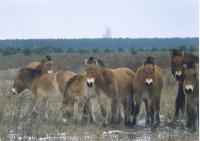
In 1986, after a fire and explosion at the Chernobyl Nuclear Power Plant released radioactive particles into the air, thousands of people left the area, never to return. Now, researchers have found that the Chernobyl site looks less like a disaster zone and more like a nature preserve, teeming with elk, roe deer, red deer, wild boar, and wolves. The findings are a reminder of the resilience of wildlife.
-
-
Airport X-ray screening systems comply with health and safety radiation exposure standard
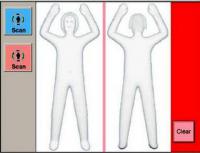
Machines that use advanced X-ray imaging technology to screen airport passengers comply with radiation exposure limits set by the American National Standards Institute/Health Physics Society (ANSI/HPS), says a new report from the National Academies of Sciences, Engineering, and Medicine. The report also finds that the machines adhere to the recommended safety mechanisms described in the ANSI/HPS standards to prevent overexposure to radiation in the event of a mechanical failure or deliberate tampering.
-
-
Small-scale nuclear fusion may be a new energy source
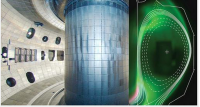
Nuclear fusion is a process whereby atomic nuclei melt together and release energy. Because of the low binding energy of the tiny atomic nuclei, energy can be released by combining two small nuclei with a heavier one. Fusion energy may soon be used in small-scale power stations. This means producing environmentally friendly heating and electricity at a low cost from fuel found in water. Both heating generators and generators for electricity could be developed within a few years, according to researchers.
-
-
Fukushima disaster was preventable: Study
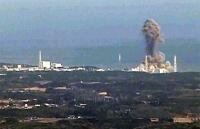
The worst nuclear disaster since the 1986 Chernobyl meltdown never should have happened, according to a new study. Researchers distilled thousands of pages of government and industry reports and hundreds of news stories, focusing on the run-up to the Fukushima Daiichi disaster in 2011. They found that “arrogance and ignorance,” design flaws, regulatory failures, and improper hazard analyses doomed the coastal nuclear power plant even before the tsunami hit.
-
-
Testing radiation detection systems in harsh conditions
Researchers from five laboratories and a private company recently spent two days in blistering 100 degree heat testing radiation detection technologies amidst cargo containers. The fifteen researchers demonstrated the feasibility of using gamma-ray and neutron imaging detectors to identify radioactive materials using the Lawrence Livermore National Laboratory’s (LLNL) cargo container stack testbed.
-
-
Mighty Saber demonstrates post-nuclear detonation technical forensics capabilities
In late 2013, a team of more than fifty scientists from across the U.S. laboratory and industrial complex began preparing for Mighty Saber with the goal of demonstrating and evaluating post-detonation technical nuclear forensics capabilities following a simulated detonation of a nuclear device in an urban environment. Mighty Saber, which ran from 27 July to 21 August 2015, successfully met each of its objectives, including demonstrating U.S. government post- detonation nuclear forensics processes; the value of prompt diagnostics data provided by the Discreet Oculus ground-based sensor network; and how prompt diagnostics complements radiochemistry in providing a robust post-detonation nuclear forensics capability.
-
-
Radioactive contaminants found in coal ash from all three major U.S. coal-producing basins
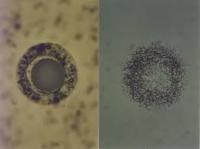
A new study has revealed the presence of radioactive contaminants in coal ash from all three major U.S. coal-producing basins. The study found that levels of radioactivity in the ash were up to five times higher than in normal soil, and up to ten times higher than in the parent coal itself because of the way combustion concentrates radioactivity. The finding raises concerns about the environmental and human health risks posed by coal ash, which is currently unregulated and is stored in coal-fired power plants’ holding ponds and landfills nationwide.
-
-
New NGA global map advances geophysics R&D, nuclear nonproliferation
A team of researchers led by scientists at the National Geospatial-Intelligence Agency (NGA) published a new map 1 September which characterizes the Earth’s radioactivity and offers new and potential future applications for basic science research and nonproliferation efforts.
-
-
New drug protects against nuclear radiation’s deadly effects 24 hours after exposure
The threat of a nuclear incident, with the potential to kill or injure thousands of people, has raised global awareness about the need for medical countermeasures that can prevent radiation-induced bodily damage and keep people alive, even if given a day or more after contact with nuclear radiation. An interdisciplinary research team reports a breakthrough in countering the deadly effects of radiation exposure. A single injection of a regenerative peptide was shown significantly to increase survival in mice when given twenty-four hours after nuclear radiation exposure.
-
- All
- Regional
- Water
- Biometrics
- Borders/Immig
- Business
- Cybersecurity
- Detection
- Disasters
- Government
- Infrastructure
- International
- Public health
- Public Safety
- Communication interoperabillity
- Emergency services
- Emergency medical services
- Fire
- First response
- IEDs
- Law Enforcement
- Law Enforcement Technology
- Military technology
- Nonlethal weapons
- Nuclear weapons
- Personal protection equipment
- Police
- Notification /alert systems
- Situational awareness
- Weapons systems
- Sci-Tech
- Sector Reports
- Surveillance
- Transportation
Advertising & Marketing: advertise@newswirepubs.com
Editorial: editor@newswirepubs.com
General: info@newswirepubs.com
2010-2011 © News Wire Publications, LLC News Wire Publications, LLC
220 Old Country Road | Suite 200 | Mineola | New York | 11501
Permissions and Policies
Editorial: editor@newswirepubs.com
General: info@newswirepubs.com
2010-2011 © News Wire Publications, LLC News Wire Publications, LLC
220 Old Country Road | Suite 200 | Mineola | New York | 11501
Permissions and Policies
